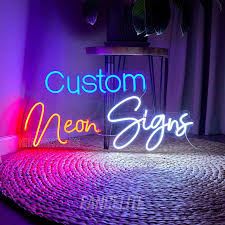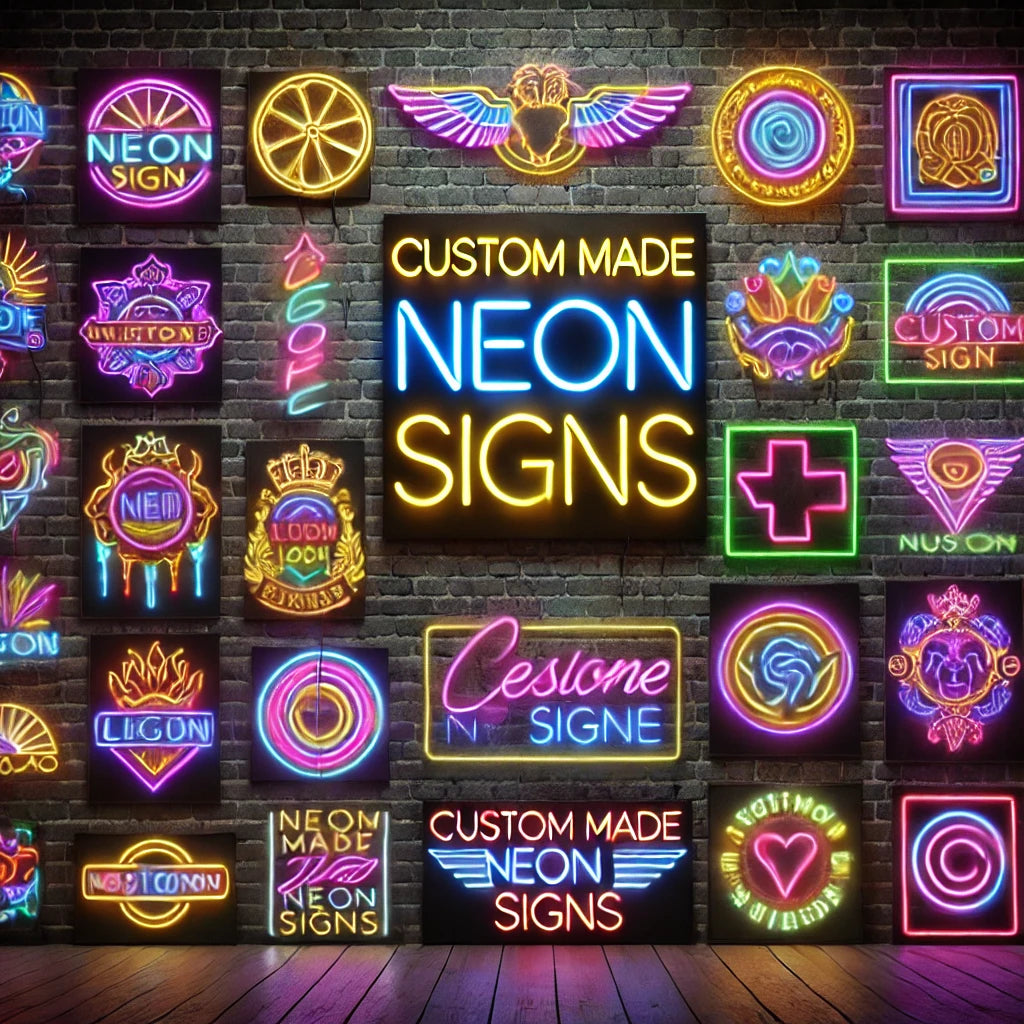In today’s world, where personalization and self-expression reign supreme, the demand for unique home decor and branding solutions has never been higher. One trend that continues to shine brightly is the custom neon sign. These vibrant, glowing pieces of art not only serve as striking decor elements but also convey messages, set moods, and represent identities. This blog will explore the fascinating world of custom design neon signs, discussing their history, design process, applications, and the reasons behind their growing popularity.
The History of Neon Signs
Neon signs have a rich and colorful history dating back to the early 20th century. The first neon sign was created in 1910 by French engineer Georges Claude, who discovered that electrical currents could illuminate neon gas within glass tubes. Initially used for advertising, neon signs quickly became iconic symbols of urban culture, particularly in bustling cities like New York and Las Vegas. Their bright colors and unique shapes made them a popular choice for businesses looking to attract attention.
Over the years, neon signs have evolved from purely commercial uses to artistic expressions. With advancements in technology, LED neon signs have emerged as a modern alternative, allowing for greater flexibility in design and application. However, the nostalgic charm of traditional neon signs remains, making them a beloved choice for many.
Why Custom Neon Signs?

1. Personalization and Self-Expression
In an era where individuality is celebrated, custom design neon signs offer a unique way to express one’s personality. Whether it’s a favorite quote, a unique phrase, or a representation of personal interests, custom signs can be tailored to reflect one’s identity. This personalization makes them ideal for home decor, businesses, events, and gifts.
2. Versatility of Design
The design possibilities with custom neon signs are virtually limitless. From typography to intricate graphics, these signs can be crafted to fit any aesthetic or theme. The use of various colors, sizes, and styles allows for a perfect match with any decor or branding strategy. For businesses, custom neon signs can reinforce brand identity and create a memorable impression on customers.
3. Eye-Catching Appeal
The vibrant glow of neon signs naturally draws attention, making them an effective tool for advertising and decoration. In a world saturated with visual stimuli, a custom neon sign can cut through the noise, ensuring that your message stands out. Whether it’s a restaurant wanting to attract diners or a couple celebrating a wedding, these signs create an unforgettable visual impact.
The Design Process
Creating a custom neon sign involves several steps, from conceptualization to installation. Here’s a breakdown of the design process:
1. Conceptualization
Every great design starts with an idea. The first step in creating a custom design neon sign is to brainstorm concepts. Consider what message or image you want the sign to convey. This could range from simple text to elaborate designs. Sketching out ideas or using digital design tools can help visualize the concept.
2. Choosing Colors and Fonts
Color is one of the most critical aspects of neon sign design. Neon signs typically come in a variety of colors, each evoking different emotions and atmospheres. For instance, blue might convey tranquility, while red can signify passion. When choosing colors, consider the overall mood you want to create.
Fonts also play a crucial role in the design. Whether you prefer bold, block letters or delicate script, the font should complement the message and enhance readability.
3. Material Selection
The traditional neon sign is made from glass tubes filled with neon gas, but modern designs often use LED lights for their flexibility and energy efficiency. When selecting materials, consider the intended location of the sign (indoor vs. outdoor), durability, and maintenance.
4. Production
Once the design is finalized, it’s time for production. Skilled artisans or manufacturers will create the sign according to your specifications. If using glass tubes, this involves bending the glass to form the desired shapes. For LED signs, the design is typically printed onto a flexible backing with LED lights integrated.
5. Installation
After production, the final step is installation. Depending on the sign's size and location, this may involve professional help. Proper installation ensures that the sign is securely mounted and safely powered, especially for larger or outdoor signs.
Applications of Custom Neon Signs
Custom neon signs have a wide range of applications across various settings:
1. Home Decor
Neon signs can add a unique touch to home decor. Whether it's a playful quote in a child’s room, a romantic phrase in a bedroom, or a striking piece of art in the living room, these signs can enhance the ambiance of any space. Many people use them to create focal points or to complement existing decor styles.
2. Business Branding
For businesses, custom neon signs are a powerful branding tool. They not only attract customers but also convey the brand’s personality. Cafes, bars, salons, and boutiques often use neon signs to create a trendy atmosphere and to communicate their offerings. A well-designed neon sign can become a signature element that customers associate with the brand.
3. Events and Celebrations
Custom neon signs are perfect for special occasions like weddings, birthdays, and parties. They can be used as backdrops for photo ops, or to highlight key moments and messages. Personalized signs add a festive touch and serve as lasting mementos of the celebration.
4. Art Installations
As art continues to evolve, many artists incorporate neon signs into their installations. These signs can convey powerful messages or enhance thematic elements in contemporary art. Their vibrant glow and striking aesthetics make them a favorite medium for artists looking to make a statement.
Caring for Your Neon Sign
To ensure the longevity of your custom neon sign, proper care and maintenance are essential. Here are a few tips:
1. Regular Cleaning
Dust and dirt can accumulate on the surface of your sign, dulling its shine. Use a soft, dry cloth to gently wipe the surface. For tougher grime, a damp cloth with mild soap can be used, but avoid excessive moisture.
2. Handle with Care
If your sign is made of glass, handle it with care to prevent breakage. When moving or cleaning, ensure it is unplugged and safely supported.
3. Check Electrical Connections
For neon signs that require electrical connections, periodically check for frayed wires or loose connections. This ensures safety and prevents potential hazards.
Conclusion
Custom design neon signs offer an exciting way to illuminate spaces, convey messages, and express individuality. With their rich history, versatile design options, and wide-ranging applications, they have become a cherished element in both personal and commercial settings. Whether you’re looking to enhance your home decor, promote your business, or celebrate a special occasion, a custom neon sign can add a touch of brilliance and personality.
As the trend of customization continues to grow, investing in a unique neon sign can transform any environment, making it more vibrant and inviting. So, why not let your creativity shine? Explore the possibilities of custom neon signs and illuminate your world with your unique vision!




